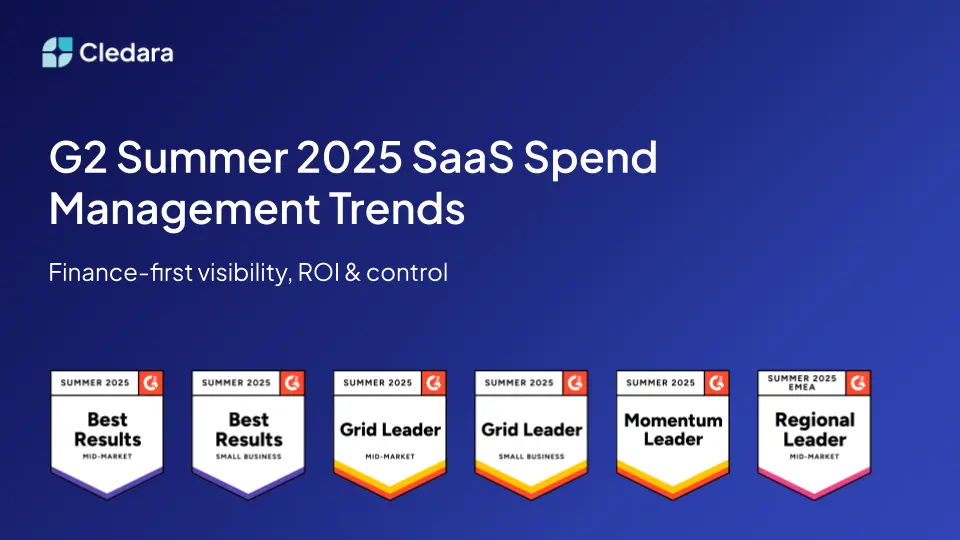Last Monday, it was publicly announced that Cledara had raised a $3.4M seed-round, making it the largest UK seed-round for a female-founded fintech startup in 2020. Later on the week, London Tech Watch interviewed our CEO and founder, Cristina Vila, to talk about the challenges of raising a venture fund round in today's world and on how the pandemic affected the business. Full interview here.
The origins of Cledara**
Cledara is one of those projects that come about from the personal experience of realising that the world hasn’t thought of a solution for a new problem - the challenges arising from the rise of SaaS - right at the perfect time - at the explosion of open APIs for financial services. Cristina explains, “My co-founder Brad and I were both early employees at dopay, a company that grew to 140 people in 2 years that counts Uber and McDonalds as customers” and “SaaS caused big challenges”.
So what Brad and Cristina did next to confirm their hypothesis: “we spoke to other founders to see how they were managing it and most recognized the problem but hadn’t found a good way to manage it.”
And here is the key: Cristina said that “Cledara is the system we wished we had when we were scaling these businesses”.
“Cledara is the system we wished we had when we were scaling these businesses”
Today, at Cledara we help companies manage, control, and automate their SaaS so that they can scale their operational processes, comply with regulations, and save money. We have customers in 12 countries and are among the most promising fintech startups in Europe, according to the FinTech 50 2020, growing more than 20x this year.
The funding process**
As you may have guessed, raising a venture fund via Zoom has its challenges. Cristina affirms it in the interview: “there were two competing forces at play. On one hand, investors realized the size of the opportunity and the importance of the solution, especially given the impact of COVID. On the other, many funds were trying to figure out how to invest remotely for the first time.”
When asked about the biggest challenge of raising capital, Cristina had it very clear. “The biggest challenge was that the usual approach just wasn’t going to work”, she says. “Usually, at the Seed Stage, it’s key for VCs to get to know the team and build a relationship. With everything on Zoom, it was much tougher to build those personal relationships and so we changed our approach to one that was quite data-centric.”
“Usually at the Seed Stage, it’s key for VCs to get to know the team and build a relationship. With everything on Zoom, it was much tougher to build those personal relationships and so we changed our approach to one that was quite data-centric.
The pivot in fundraising strategy worked out phenomenally well and Cledara closed a deal with Nauta Capital, one of the largest B2B SaaS investors in Europe. “We’re certain they’re super well placed to support the next chapter of our growth”, Cristina said.
Today, Cristina and Brad’s focus is “to grow the team, from the current 4 to at least 25 across all areas of the business”. And “we’re also working on launching in the US”, she said (more on this soon!).
Future of SaaS**
As you know, venture capital investing is all about the future. That’s why funding rounds take place and Cledara’s seed round is not an exception. In the pandemic world, we believe at Cledara that empowering people to choose their own SaaS stack is key to productivity and employee happiness. And Cristina goes deeper to suggest that “‘Bring Your Own Software’ is the logical evolution of the ‘Bring Your Own Device’, a trend that began 10 years ago.”
One piece of advice for startup founders**
Cristina was lastly asked for a piece of advice for founders. She is a founder who really cares about having an impeccable product and the best customer experience possible, so her advice was right on the spot: “I believe the solution to almost every problem faced by startups can be solved by talking to customers and prospective customers. It will help you better understand the problem you’re solving, you’ll recruit more customers, and maybe even get new revenue”, she said.
Conclusion**
If you wanted to know whether raising a round via Zoom is harder than usual, the answer is yes. Impossible? No. Because at the end of the day, a good opportunity is a good opportunity, regardless of where the meetings take place. And a good team that goes remote, is still a good team. And venture funds know that well.










.webp)

.webp)

-min%20(1).png)




